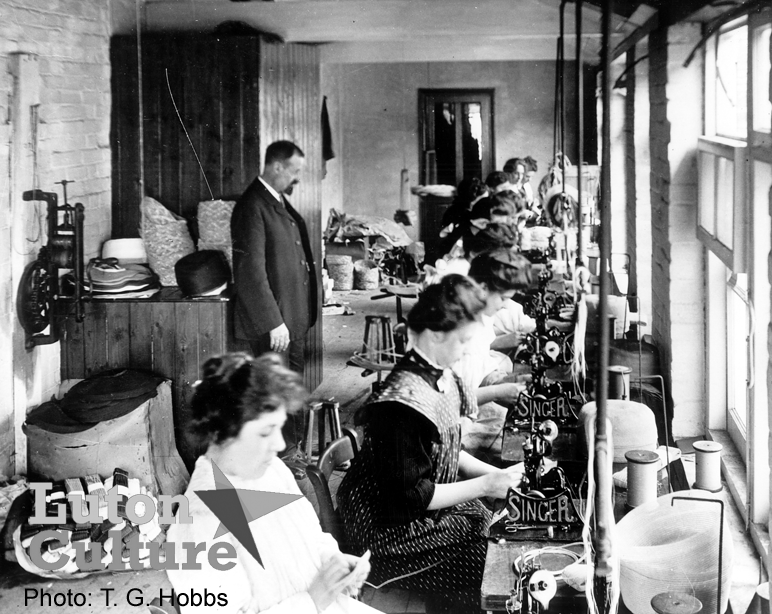The season is now so far advanced that the general character of the classes of hat that will be in demand this spring may be accurately indicated. The economic conditions of the country necessitate a general reduction in the prices of the hats, that may in some measure correspond with the diminishing purchasing power of the community.
At the corresponding period of last year the average of prices was high; this season it is low, disastrously so, probably one-third of that which ruled last season. As a result of this, prices for work done are also abnormally low. In recent issues of The Luton News this subject was referred to in the correspondence columns, and quotation were there given, which makes one furiously to think. They were undoubtedly sweating prices, and can have reference only to low-priced hats.
 These figures differ widely from those given by reputable firms, for the relatively small number of high-priced hats that are required. Instead of 1d or 1½d per hat, they rise to 5d or 6d. These higher quotations enable a skilled operative to earn a good living without excessively long hours. Even these higher prices are lower than they were last year, when 6d and 7d were ruling figures.
These figures differ widely from those given by reputable firms, for the relatively small number of high-priced hats that are required. Instead of 1d or 1½d per hat, they rise to 5d or 6d. These higher quotations enable a skilled operative to earn a good living without excessively long hours. Even these higher prices are lower than they were last year, when 6d and 7d were ruling figures.
We think that the remedy rests largely with the operatives. There is just now a keen demand for all kinds of workpeople, chiefly for machinists and fancy hat sewers. As the supply is evidently insufficient for the local needs, one would have thought that persistent application for a rise in prices for efficient work would be followed by by a limited amount of success.
Some persons cry out for combination amongst the workers, but this seems inapplicable to local conditions. If there were only a few large workrooms, in each of which several hundred sewers were concentrated, which was the case previous to 1860, then a general strike in any one of such factories would achieve success. Since that period the tendency has been to the multiplication of small workrooms, where a limited number of workpeople would find themselves powerless to alter the general conditions of labour. If a hundred such workrooms would unite, they would become a power to be reckoned with - this is the crux of the situation.
But apart from the unrest that is evident in a section of the community, manufacturers have to conduct their business under conditions that never existed before. The military element is dominant in Luton. Thousands of soldiers are billeted in the town, chiefly amongst the better-class operatives. This largely diminishing the producing power of the local manufacturers, as the wives, who are usually skilled machinists, have to wait on their lodgers instead of making hats. This is a serious loss to Luton, and will adversely affect the balance at stocktaking of those who look to these workpeople to help them to meet the extra demands in the season.
This is a very guarded way of describing the situation. A few days a well-known Luton manufacturer said to the writer that three weeks previously he took on four extra outdoor workers. For the first two weeks they turned out a large number of hats, and he thought himself in clover. Then Territorials were billeted upon them and their output was reduced to a mere fraction of what it had been.
Another manufacturer remarked: "If we can pay our way this season we shall be lucky!" Manufacturers seem hit all ways - scarcity of labour, increased cost of raw materials, and the reluctance of wholesale buyers to submit to any advance in prices comparable to the increased cost of production.
Only one of these conditions will probably be relieved, but that depends on the supply of efficient labour at the docks. There are large supplies of raw material waiting for discharge. If these are rapidly placed on the market, prices would resume their normal level.
Taking a general survey of the world's markets, one would think that Luton may anticipate a good time in the near future. There is practically no competition in manufactured hats from Germany, Austria, France and Italy, and, further, as Germany and France are not competitors for the raw materials, prices should be easy. The United States are large buyers of plait, and their purchase may steady the market.
So far as fashions in shape are concerned, small hats are still in favour for the bulk of the trade. The West End houses are, however, asking for hats with much larger brims. Should this fashion develop extensively, than fancy hats will be in abeyance and large hats of fine material will again predominate.
[Source: The Luton News, Thursday, February 25th, 1915]

